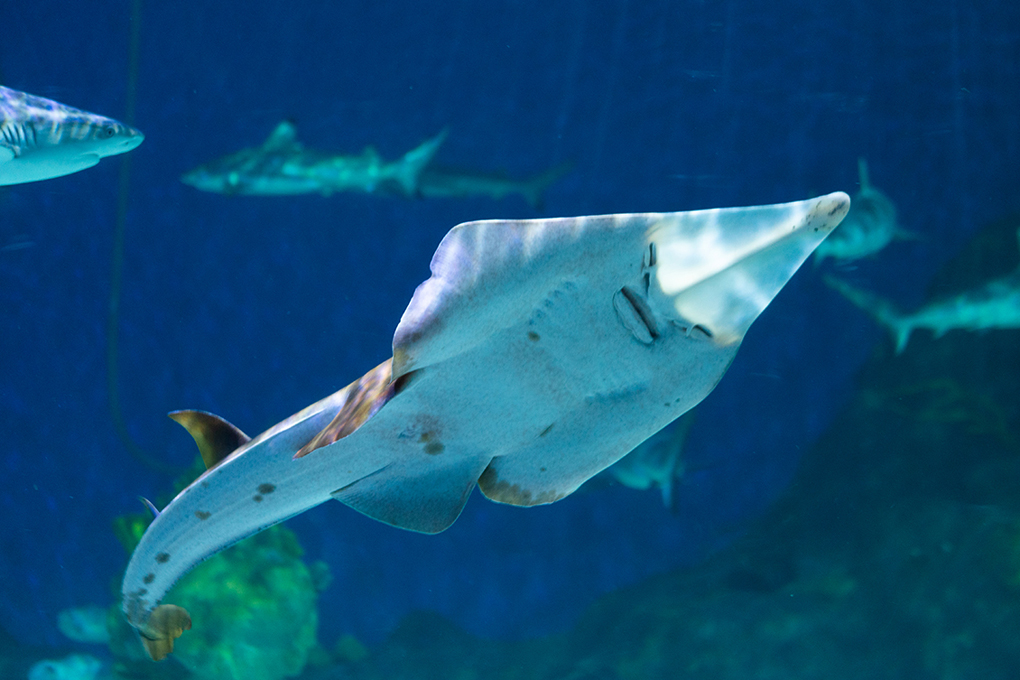Glaucostegus typus
Fast Facts
- The Giant Shovelnose Ray is a type of guitarfish.
- Guitarfishes are thought to be the oldest group of rays.
- These rays can probably see some color.
- They can live exclusively in freshwater, but it does not happen very often.


Range
Indo-West Pacific

Habitat
Offshore waters (young individuals are found inshore on sand flats and in mangrove swamps)

Size
Up to 8 feet

Nutrition
Crab, shrimp, worms, clams, small fish, crustaceans, and mollusks
Characteristics
The Shovelnose ray is well-known for its long triangular snout. Guitarfishes are a marine fish related to sharks and rays. They have a very broad and powerful tail, unlike other rays. They move by laterally undulating the entire back half of the body. The dorsal and caudal fins are more shark-like in appearance and enhance the animal’s swimming efficiency.
Behavior
This species is a major predator of crustaceans, hunting in mangrove areas and sand flats at high tide. At night they leave the sand to actively cruise the seafloor to feed on crabs, worms, clams, and occasionally other species of fish.
Reproduction
The Giant shovelnose ray is viviparous: the embryos feed on the yolk and receive nourishment from the mother’s uterine mucus, which is protein and fat. Juvenile Giant shovelnose rays utilize shallow sand flats as nursery areas. There does not appear to be a distinct seasonal reproductive cycle.

